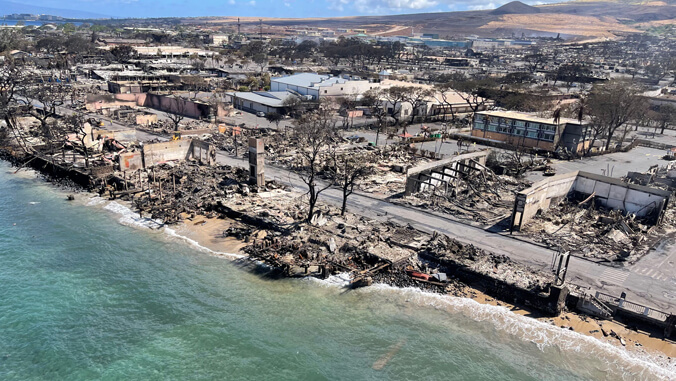
The government’s response to the 2023 Lahaina, Maui wildfire and its impact on Lahaina residents is the focus of a $3.8 million study by a team of University of Hawaiʻi at Mānoa researchers. The August 2023 wildfire, the deadliest in U.S. history, killed 102 people and displaced an estimated 14,000 residents in a community already struggling with healthcare provider shortages, with many residents on Medicaid and reliant on other social services.
The ultimate goal of the study is to strengthen the resiliency of not just our communities and families, but also our governmental agencies and emergency healthcare systems
—Alex Ortega
The five-year study funded by the National Institutes of Health will look at how the government impacted the physical and mental health needs of affected residents and how cultural insensitivities and related factors worsened pre-existing health disparities for Lahaina’s Native Hawaiian, Pacific Islander, Filipino and Mexican communities.
The two-phase study, “Population Health and Health System Resiliency Following Maui’s Wildfire Disaster,” is being led by Alex Ortega, dean of the UH Mānoa Thompson School of Social Work & Public Health, and Keaweʻaimoku Kaholokula, professor and chair of the Department of Native Hawaiian Health in UH Mānoa John A. Burns School of Medicine (JABSOM).
“There is a general perception that everything related to the wildfire, from disaster preparedness to the response and recovery, to communications, could have been better. We want to see if the data support those perceptions,” said Ortega. “The ultimate goal of the study is to strengthen the resiliency of not just our communities and families, but also our governmental agencies and emergency healthcare systems so that we can respond and recover better from future disasters.”
Community representation key to two phase study
The first phase of the study, which is already underway, will collect data to qualitatively understand the physical and mental health impacts and all of the contributing factors. The second phase will focus on the barriers to health services, circumstances that led to increased health risks and how health care services were utilized before and after the fire, and the relation to age, ethnicity, residence, Medicaid eligibility, etc.
Both phases will include a community advisory board representing various Maui-based stakeholders including community and government leaders, state Health Department and emergency service representatives, schools, traditional healers and health providers.
“We’re really engaging community folks, stakeholders, those who are directly impacted by the fires who lost their homes, who lost their jobs, but also, we’re talking with frontline first responders,” said Kaholokula. “We want to talk to healthcare leaders and government leaders. We want to see what has been the impact, what are the things they see as ways forward that we can learn from and then put that into a larger study to really look at it more comprehensively, scientifically.”
The researchers plan on working with students from UH Maui College to collect and analyze the data. The study comes as natural disasters, especially those attributed to human-caused climate change, are increasing in number and intensity. The fast moving Lahaina fire was fueled by unusually strong winds estimated to be as strong as 80 miles per hour.

